
Genetics News

 25th July, 2024
| Jenn Hoskins
25th July, 2024
| Jenn Hoskins
Genes Linked to Growth in Pacific Pearl Oysters
A study on pearl oysters reveals key genes influencing growth rates, aiding selective breeding for better commercial yields. By analyzing gene expression in fast and slow-growing oysters, researchers aim to enhance pearl oyster production through targeted genetic insights.
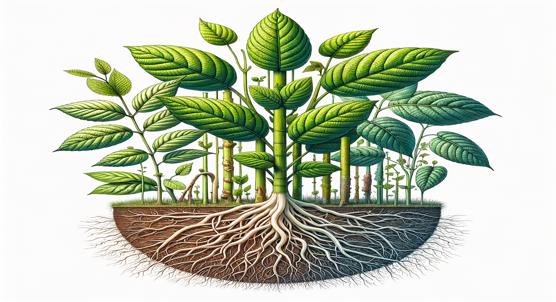
 25th July, 2024
| Jim Crocker
25th July, 2024
| Jim Crocker
Most Plant Mutations Are Specific to Certain Layers
Researchers at LMU Munich have uncovered how mutations in plant meristems—regions with stem cells—spread and lead to observable changes. Their study highlights the genetic and epigenetic mechanisms behind somaclonal variation, enhancing our understanding of plant development.

 25th July, 2024
| Greg Howard
25th July, 2024
| Greg Howard
What Octopuses Eat When They Settle Down: Insights from DNA Analysis
Researchers from ICM-CSIC studied the diets of newly settled Octopus vulgaris in the Mediterranean, revealing a primary focus on amphipods. As these octopuses grow, their diet diversifies, showcasing an adaptive shift that aids survival and highlights their ecological role.

 25th July, 2024
| Jenn Hoskins
25th July, 2024
| Jenn Hoskins
Shallow Water Planting Boosts Cold Resistance in Young Tobacco Plants
Hunan Agricultural University's study reveals that shallow water seeding enhances cold tolerance in tobacco seedlings by promoting root development and boosting antioxidant enzyme activity, offering valuable insights for improving crop resilience in cold-prone regions.
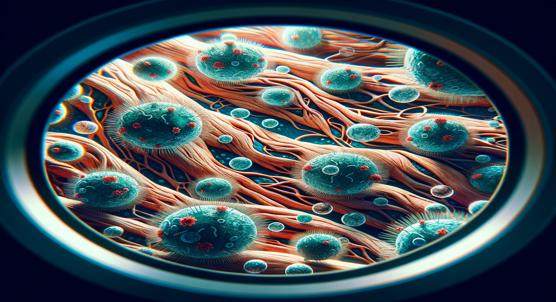
 25th July, 2024
| Greg Howard
25th July, 2024
| Greg Howard
Genome Sequencing of Tree Disease Pathogen Reveals Adaptations to Colonize Bark
Researchers sequenced the genome of Pseudocryphonectria elaeocarpicola, a fungus threatening Elaeocarpus plants in China. The findings reveal genes linked to plant infection and resistance, offering insights for developing targeted disease management and breeding strategies.

 25th July, 2024
| Jenn Hoskins
25th July, 2024
| Jenn Hoskins
Early Insights on How Fish Immune Systems Fight Viral Infections
Researchers at Hunan Agricultural University discovered that the molecule BF/C2 plays a crucial role in grass carp's immune response to Grass Carp Reovirus (GCRV). Their findings highlight potential targets for developing treatments to combat this deadly virus in aquaculture.

 24th July, 2024
| Jenn Hoskins
24th July, 2024
| Jenn Hoskins
Key Receptors Work Together to Boost Tomato Plant Defenses
Recent research reveals that the peptide hormone systemin activates tomato plant defenses by binding to the SYR1 receptor, which then pairs with SERK proteins. This interaction triggers a chain of phosphorylation events, enhancing the plant's resistance to pests and pathogens.

 24th July, 2024
| Jenn Hoskins
24th July, 2024
| Jenn Hoskins
Understanding How Melons Absorb and Manage Phosphate Under Stress Conditions
Shanghai Jiao Tong University's research on PHT1 Pi transporters in melon reveals how certain genes help plants cope with phosphorus deficiency. These insights could lead to more efficient crops and sustainable farming, reducing reliance on polluting fertilizers.

 24th July, 2024
| Jim Crocker
24th July, 2024
| Jim Crocker
Understanding How Plant Pathogen DNA Binding Predicts Function and Evolution
Researchers at the University of California have mapped how transcription factors (TFs) bind to DNA in the plant pathogen Phytophthora infestans. This study reveals both conserved and unique binding patterns, shedding light on gene regulation and adaptation in oomycetes.
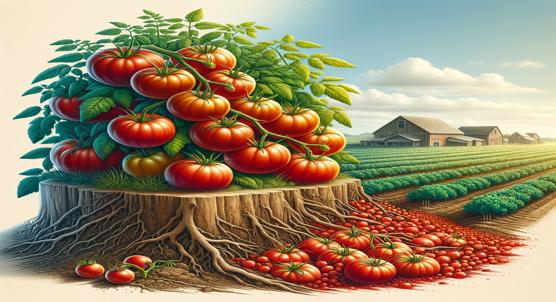
 23rd July, 2024
| Jenn Hoskins
23rd July, 2024
| Jenn Hoskins
Finding the Best Places for Wild Tomatoes to Improve Cultivated Tomato Farming
Climate change threatens global agriculture, including tomatoes. Sun Yat-sen University's research shows wild tomatoes' habitat data can help improve domesticated varieties' resilience, especially against drought. Conserving wild relatives is key for sustainable crop development.

 22nd July, 2024
| Greg Howard
22nd July, 2024
| Greg Howard
How a Key Enzyme Influences Growth and Sugar Production in Reishi Mushrooms
A Jiangnan University study reveals that overexpressing the glagt gene in Ganoderma lucidum suppresses fungal growth but boosts polysaccharide production. This dual role offers new insights into enhancing bioactive compound yields for medicinal use.
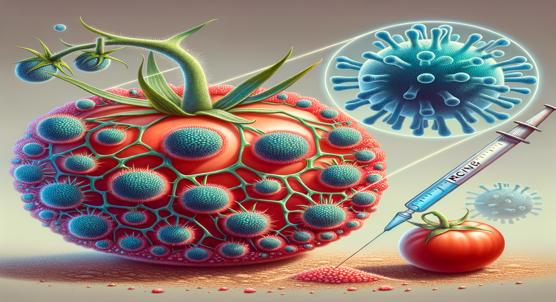
 21st July, 2024
| Jenn Hoskins
21st July, 2024
| Jenn Hoskins
Enzyme Pic14 Weakens Tomato Immune Response by Blocking Key Protein Activation
Recent research from Tel-Aviv University reveals that the Pic14 gene in tomatoes negatively regulates immune responses by dephosphorylating Mkk2, thus balancing defense mechanisms and preventing excessive cell death, offering insights for developing disease-resistant crops.

 21st July, 2024
| Jim Crocker
21st July, 2024
| Jim Crocker
How Apple Resists Alkaline Conditions Through Key Proteins and GABA Synthesis
Scientists at Northwest A&F University discovered that γ-aminobutyric acid (GABA) helps plants resist alkaline stress. Key players include MdNAC104, which lowers GABA levels, and MdSINA2, which boosts them. This breakthrough could lead to crops better suited for alkaline soils.
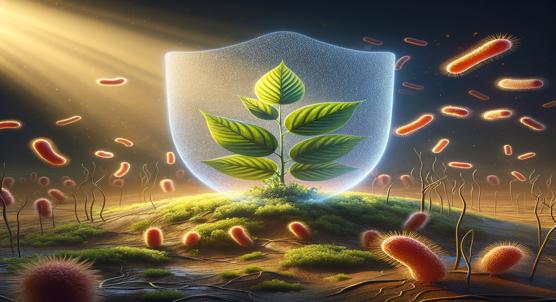
 20th July, 2024
| Greg Howard
20th July, 2024
| Greg Howard
Understanding How Fire Blight Resistance Proteins Work to Protect Plants
Researchers at Seoul National University have identified a protein in wild apple species that helps resist the devastating fire blight disease. This discovery could lead to new, genetically resistant apple varieties, enhancing agricultural productivity.
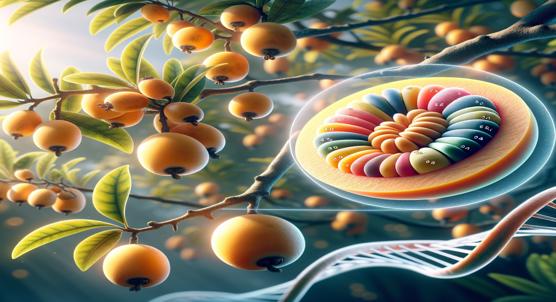
 20th July, 2024
| Jenn Hoskins
20th July, 2024
| Jenn Hoskins
Discovering Key Genes in Loquat and Their Role in Producing Plant Pigments
Researchers at Southwest University identified EjMYB5, a key transcription factor regulating proanthocyanidin accumulation in loquat. Overexpressing EjMYB5 in tomatoes and tobacco altered flavonoid levels, offering insights for improving fruit quality and health benefits.
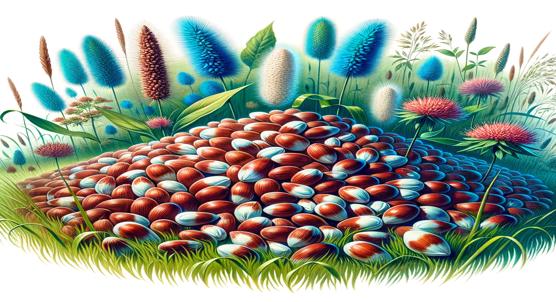
 20th July, 2024
| Greg Howard
20th July, 2024
| Greg Howard
Seed Yield Linked to Growth Hormone Genes in Wild Kentucky Bluegrass
Researchers at Ningxia University reveal that cytokinins, plant hormones crucial for cell division, significantly influence seed yield in Kentucky bluegrass by regulating gene expression during panicle development. This insight could enhance agricultural productivity.

 20th July, 2024
| Jenn Hoskins
20th July, 2024
| Jenn Hoskins
Cassava Yield Stability and Genetic Traits in Tropical Humid Regions
Cassava, vital for millions, faces challenges from environment interactions affecting yield. A study identified stable, high-performing genotypes using advanced methods, aiding in the development of robust cultivars for better food security and nutrition.
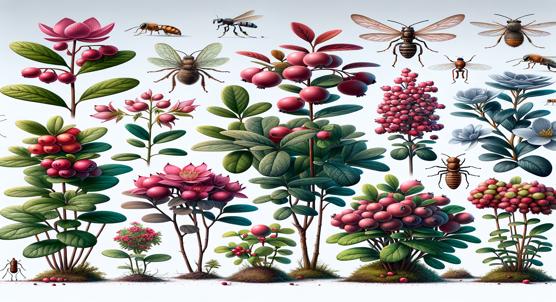
 20th July, 2024
| Greg Howard
20th July, 2024
| Greg Howard
Cranberry Plant Variations and Their Resistance to Multiple Insect Pests
The University of São Paulo's study reveals that cranberry genotypes with higher total phenolics offer better resistance to herbivores. This insight is crucial for breeding programs, suggesting that modern hybrids, focused on yield, may be more susceptible to pests.
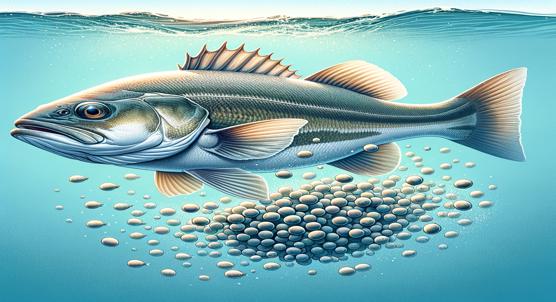
 20th July, 2024
| Jim Crocker
20th July, 2024
| Jim Crocker
How Birth Year and Size Affect Reproduction in Adult European Sea Bass
Researchers at Damietta University found that spawning year and female brooder weight significantly impact the reproductive performance of European sea bass. This insight could improve brood selection and enhance aquaculture practices for this valuable species.

 20th July, 2024
| Jenn Hoskins
20th July, 2024
| Jenn Hoskins
How Long Non-Coding RNAs Help Rapeseed Seedlings Cope with Drought Stress
A groundbreaking study reveals how long non-coding RNAs (lncRNAs) help rapeseed adapt to drought and rehydration. Key plant hormones like ABA and auxin play crucial roles, offering new insights for developing drought-resistant crops.

 19th July, 2024
| Greg Howard
19th July, 2024
| Greg Howard
Understanding Leaf Shape and Gene Activity in Unique Soybean Varieties
A study by South China Agricultural University reveals that modifying soybean leaf traits, such as shape and size, can enhance crop yields. By analyzing a mutant with rolled and narrow leaves, researchers identified key genetic and hormonal factors that could boost productivity.

 19th July, 2024
| Jenn Hoskins
19th July, 2024
| Jenn Hoskins
Understanding How Specific Genes Influence Grape Shape
Researchers at Nanjing Agricultural University identified key grape genes, particularly VvOFP4, that regulate fruit shape. Overexpressing VvOFP4 in plants altered their morphology, suggesting its potential in breeding programs to diversify fruit shapes.

 19th July, 2024
| Jim Crocker
19th July, 2024
| Jim Crocker
Complete Genome Sequences of Two Viruses Found in Echinacea Seeds
Researchers in Korea discovered two new viruses in echinacea seeds, expanding the Tombusviridae family. These viruses, closely related to oat chlorotic stunt virus, highlight the complex evolution and diversity of plant viruses, emphasizing the need for ongoing surveillance.

 19th July, 2024
| Greg Howard
19th July, 2024
| Greg Howard
Genetic Diversity in Traditional and Wild Japanese Iris Varieties
Researchers at Okayama University stress the urgent need to conserve the genetic diversity of wild Iris ensata var. spontanea. These wild relatives hold key traits that can enhance the resilience and quality of cultivated varieties, crucial for future agricultural sustainability.

 19th July, 2024
| Greg Howard
19th July, 2024
| Greg Howard
Understanding the Role of Key Enzyme Components in Plant Pathogen Fusarium
Research from Zhejiang University reveals how specific enzyme subunits in the fungus causing rice bakanae disease affect its growth and resistance to fungicides. This insight aids in developing better strategies to combat crop diseases and manage fungicide resistance.

 19th July, 2024
| Jenn Hoskins
19th July, 2024
| Jenn Hoskins
Genes Influencing Flowering in Bambara Groundnut
Researchers at the Federal University Oye-Ekiti have identified genetic markers controlling flowering in Bambara groundnut. These findings could help improve crop yields and resilience by targeting genes involved in stress responses and developmental processes.

 19th July, 2024
| Jim Crocker
19th July, 2024
| Jim Crocker
Genetic Patterns of Pond Turtles at the Northern Edge of the Pannonian Basin
This study reveals high genetic diversity in European pond turtles at the edge of their range in the Pannonian Basin, challenging the notion that peripheral populations have lower genetic diversity. It also finds evidence of hybridization between different subspecies.
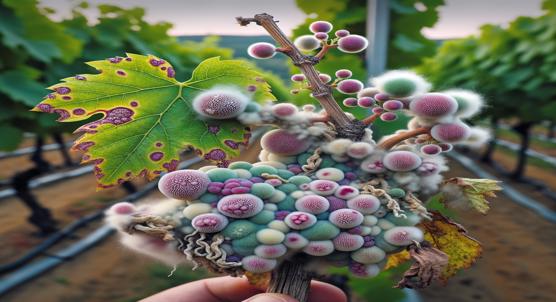
 18th July, 2024
| Greg Howard
18th July, 2024
| Greg Howard
Gene Deletions Cause Grapevine Resistance to Downy Mildew to Fail
Researchers have identified the avrRpv3.1 locus in Plasmopara viticola, revealing how this pathogen overcomes grapevine resistance. This discovery sheds light on the genetic mechanisms behind downy mildew adaptation, paving the way for better crop protection strategies.

 18th July, 2024
| Greg Howard
18th July, 2024
| Greg Howard
Comparing Brain Structure Connections in Humans and Chimps
A Paris-Saclay University study explores superficial white matter bundles (SWMBs) in human and chimpanzee brains using innovative methods, revealing differences in brain connectivity and gyrification, offering new insights into cognitive function and evolution.
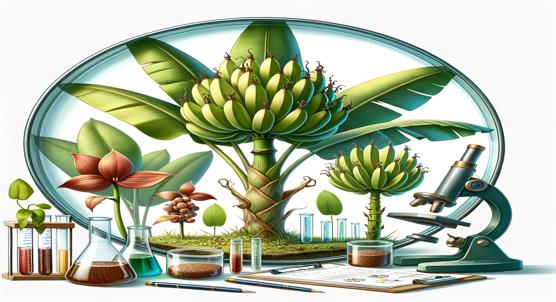
 18th July, 2024
| Jenn Hoskins
18th July, 2024
| Jenn Hoskins
Reliable Genes for Measuring Disease Resistance in Different Banana Varieties
Researchers identified stable reference genes in banana genotypes resistant and susceptible to Fusarium wilt, a disease threatening global banana production. This discovery aids accurate gene expression analysis, crucial for developing resistant banana cultivars.

 18th July, 2024
| Greg Howard
18th July, 2024
| Greg Howard
How a Virus Stops Plant Defenses to Boost Immune Response
New research reveals how tomato plants maintain low levels of immune receptors yet trigger strong defenses against pathogens. The study highlights the role of the E3 ligase SBP1 in regulating the turnover of the NLR protein Sw-5b, ensuring rapid immune responses upon infection.
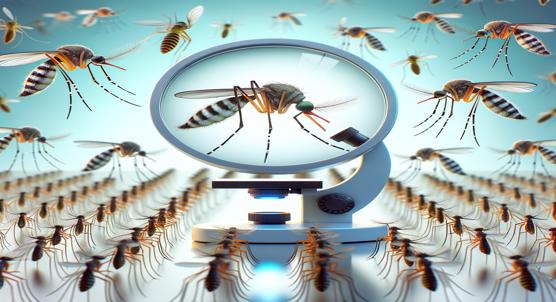
 18th July, 2024
| Greg Howard
18th July, 2024
| Greg Howard
CRISPR Gene Editing Shows Diversity in Mosquito Populations
Researchers are using CRISPR technology to genetically modify mosquitoes, aiming to reduce their ability to spread diseases like malaria. By targeting specific genes, they hope to create more effective and adaptable control strategies across diverse mosquito populations.

 18th July, 2024
| Jenn Hoskins
18th July, 2024
| Jenn Hoskins
Understanding How Wheat Copes with Drought and Salt Stress
A study from Ludong University reveals the vital role of Alfin-like proteins in plant stress responses. These proteins regulate genes crucial for coping with drought and salinity, offering potential for developing more resilient crops and ensuring food security.
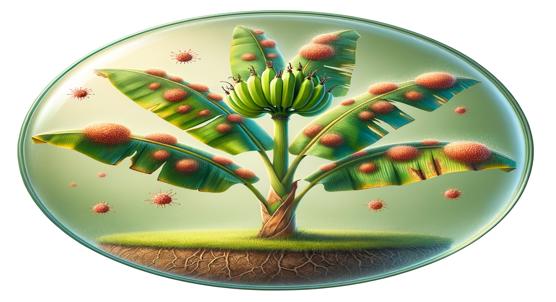
 17th July, 2024
| Greg Howard
17th July, 2024
| Greg Howard
New Virus Found to Reduce Harmfulness in Banana Plant Fungus
A novel mycovirus, HadV1-LA6, shows promise in controlling Fusarium wilt in bananas by reducing the growth and virulence of the harmful fungus Foc. This biocontrol method offers a safe, eco-friendly alternative to traditional management strategies.

 17th July, 2024
| Greg Howard
17th July, 2024
| Greg Howard
How Flowering Genes Influence Blooming Traits in Soapberry Family Plants
Researchers at South China Agricultural University have uncovered how variations in the FT gene family regulate flowering in Sapindaceae plants like lychee and rambutan. These insights could lead to breeding fruit varieties with optimized flowering times, enhancing productivity.
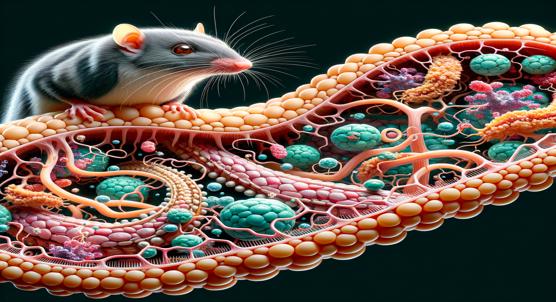
 16th July, 2024
| Jenn Hoskins
16th July, 2024
| Jenn Hoskins
Proteins in Shrew Venom Glands Help with Gland Function and Venom Creation
Researchers at Nicolaus Copernicus University uncovered 500 proteins in the venom glands of two shrew species, revealing roles in metabolism, stress response, and immune defense. This study enhances our understanding of venom's ecological and biological significance in mammals.
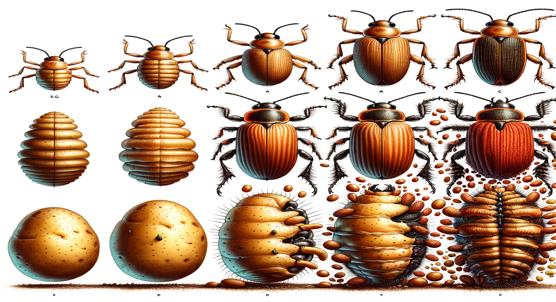
 16th July, 2024
| Greg Howard
16th July, 2024
| Greg Howard
Gene Activity Changes in Different Life Stages of Potato Pest
Researchers at The University of Arizona uncovered how the bacteria "Ca. Liberibacter solanacearum" infects potato psyllids and tomato plants. They found that gene expression varies by host and psyllid developmental stage, offering insights for new disease management strategies.

 16th July, 2024
| Jenn Hoskins
16th July, 2024
| Jenn Hoskins
Drought Tolerance in Pure Lines from Crossbreeding Upland Cotton
A study by Aydin Adnan Menderes University identifies key cotton traits like fiber length and boll weight that enhance drought tolerance. Using advanced analyses, researchers pinpoint promising genotypes for breeding, crucial for stable yields amid climate change.
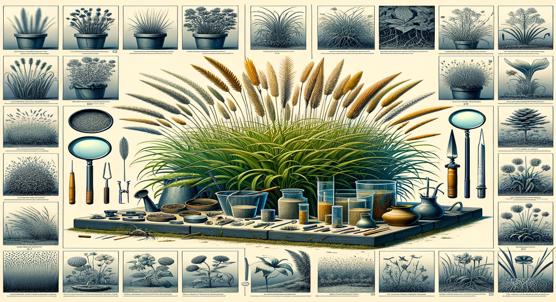
 16th July, 2024
| Jenn Hoskins
16th July, 2024
| Jenn Hoskins
Studying Different Types of Bermuda Grass in Shaded Areas Across Various Regions
A study by Yangzhou University identified shade-tolerant bermudagrass genotypes, revealing L01 and L06 as highly resilient. This research aids turf management and breeding, linking genetic, biochemical, and environmental factors to enhance stress tolerance and adaptability.

 16th July, 2024
| Greg Howard
16th July, 2024
| Greg Howard
Understanding Nickel Balance in Microorganisms Through Genomic Analysis
Recent research reveals cable bacteria's unique ability to transport electrons over long distances, thanks to a novel nickel-containing cofactor. This discovery highlights their crucial role in sediment biogeochemistry and potential for bioelectronic applications.

 16th July, 2024
| Jim Crocker
16th July, 2024
| Jim Crocker
Understanding Genetic Diversity and Natural Selection for Vaccine Development
Malaria control is hindered by the genetic diversity of its parasites, P. falciparum and P. vivax. Recent research reveals high variability in key genes, complicating vaccine development. Understanding this diversity is crucial for effective malaria strategies.

 16th July, 2024
| Jim Crocker
16th July, 2024
| Jim Crocker
Mapping Leaf and Stripe Rust Resistance Genes Using Advanced Genetic Tools
Punjab Agricultural University developed wheat line ILsp3603 with resistance to leaf and stripe rust. They mapped resistance genes Lrsp3603 and Yrsp3603 on chromosome 6B, aiding future wheat breeding to combat these yield-threatening diseases and enhance food security.

 16th July, 2024
| Jim Crocker
16th July, 2024
| Jim Crocker
Sugar Enhances Growth Through Specific Plant Genes in Torreya Grandis
Researchers at Zhejiang A&F University have uncovered that sucrose promotes cone enlargement in Torreya grandis via the TgNGA1, TgWRKY47, and TgEXPA2 genes. This finding could enhance seed production in gymnosperms by manipulating sugar signaling and gene expression.

 16th July, 2024
| Greg Howard
16th July, 2024
| Greg Howard
Understanding Soil Bacteria Around Citrus Trees with Disease-Fighting Genes
Researchers have engineered citrus trees with human lysozyme and β-defensin-2 to combat citrus greening. This method targets the disease in the plant's vascular system and shows minimal impact on soil microbiota, offering a promising, sustainable control strategy.
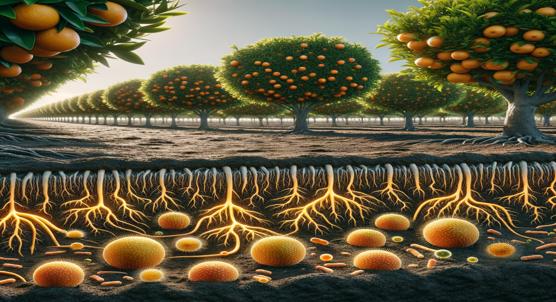
 15th July, 2024
| Jenn Hoskins
15th July, 2024
| Jenn Hoskins
Study of Soil Bacteria Around Citrus Trees Producing Antimicrobial Compounds
Genetically modified citrus trees expressing phloem-targeted antimicrobials show promise in combating citrus greening without disrupting soil microbiome diversity, offering a sustainable and effective solution to this devastating disease.
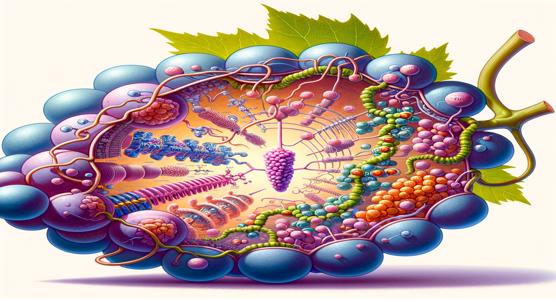
 15th July, 2024
| Jim Crocker
15th July, 2024
| Jim Crocker
Key Proteins Work Together to Help Grapes Set Fruit
Research from Henan University reveals the VlLOG11 gene's crucial role in grapevine fruit setting via cytokinin signaling. Overexpressing VlLOG11 boosts fruit set and cytokinin-related genes, offering insights for improving grape yield and quality.
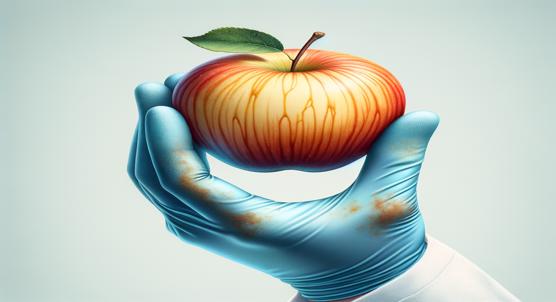
 15th July, 2024
| Greg Howard
15th July, 2024
| Greg Howard
Key Protein MdbZIP44 Controls Browning in Apples by Targeting MdPPO2 Gene
Researchers at Shandong Agricultural University discovered that the MdbZIP44 gene plays a key role in apple browning by enhancing the expression of the MdPPO2 gene. This finding could help develop apple varieties with reduced browning, improving their appeal and marketability.

 15th July, 2024
| Jenn Hoskins
15th July, 2024
| Jenn Hoskins
Understanding the Role of SRO Genes in Rapeseed's Response to Drought Stress
Researchers from the Guizhou Academy of Agricultural Sciences identified key SRO genes in rapeseed that enhance drought resistance. By understanding these genes' roles, they aim to improve rapeseed yield and adaptability under water-deficit conditions.

 14th July, 2024
| Jim Crocker
14th July, 2024
| Jim Crocker
Complete Genome Mapping of Sea Buckthorn Variety
Researchers have sequenced the genome of a hybrid sea buckthorn, revealing key genetic insights. This study provides a valuable resource for understanding sea buckthorn's traits and improving cultivation practices, paving the way for enhanced breeding and sustainability.

 14th July, 2024
| Jim Crocker
14th July, 2024
| Jim Crocker
Boosting Natural Plant Compound Levels in Poplar Trees Using OsFMT1
Researchers at the University of British Columbia have enhanced the digestibility of lignocellulosic biomass by overexpressing a rice enzyme in hybrid poplar, making lignin easier to break down and improving processing efficiency for biofuel production.
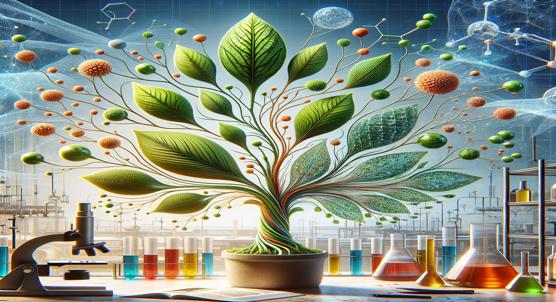
 14th July, 2024
| Jenn Hoskins
14th July, 2024
| Jenn Hoskins
Unique Plant Shows Dual Metabolism in Seedlings and Leaves, Study Finds
Researchers discovered how the plant Sesuvium sesuvioides uniquely uses both C4 and CAM photosynthesis. By analyzing gene expression, they revealed how this dual capability helps the plant adapt to varying environments, offering insights for agricultural advancements.

 14th July, 2024
| Jim Crocker
14th July, 2024
| Jim Crocker
New Deep-Sea Species and Its Complete Genetic Blueprint and Evolutionary Study
The discovery of a new sea cucumber species in the deep Pacific by the First Institute of Oceanography offers fresh insights into deep-sea biodiversity. Genomic analysis reveals unique adaptations to extreme conditions, challenging our understanding of these remote ecosystems.

 14th July, 2024
| Jenn Hoskins
14th July, 2024
| Jenn Hoskins
Understanding How Traits Are Inherited in Farm Animals
The University of Liège study advances our understanding of livestock genetics by using heritability partitioning to estimate the impact of different genetic variants on traits like milk production and fertility, promising more efficient breeding programs.
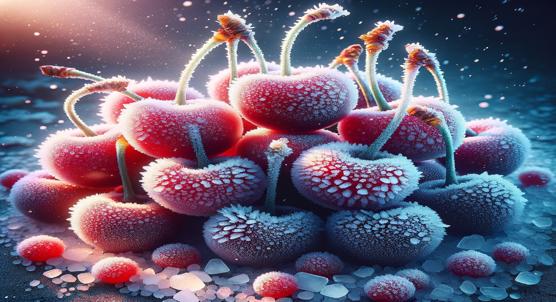
 13th July, 2024
| Jenn Hoskins
13th July, 2024
| Jenn Hoskins
Understanding How Sweet Cherry Proteins Help Cope with Cold and Salt Stress
Researchers at Ludong University identified CSP genes in sweet cherry, revealing that PavCSP1 and PavCSP3 improve growth under low-temperature and salt stress. This study highlights CSPs' crucial role in stress tolerance, with potential agricultural benefits.

 13th July, 2024
| Jim Crocker
13th July, 2024
| Jim Crocker
Uncovering Key Rice Genes for Strong Stems and Precision Breeding Applications
Researchers at Yangzhou University have identified a key genetic locus for stem diameter in rice, crucial for lodging resistance. This discovery could lead to the development of high-yield, lodging-resistant rice varieties, securing future food supplies for billions.

 13th July, 2024
| Jenn Hoskins
13th July, 2024
| Jenn Hoskins
How Environment and Genetics Affect Harvest Dates in Sugar Beet Varieties
Research by AREEO highlights optimal harvest times (HD3 and HD4) and stable sugar beet cultivars (Shokoufa and Arya) to boost yield stability. Integrating wild beet genetics and enhancing by-product use can further improve sugar beet's resilience and economic value.

 13th July, 2024
| Jim Crocker
13th July, 2024
| Jim Crocker
Discovery of a New Virus from the Fungus Cordyceps Javanica
Researchers at Qingdao Agricultural University discovered a novel virus, CjNRSV1, in the fungus Cordyceps javanica, which infects insects. This finding expands our understanding of fungal viruses and their potential in pest control and fungal disease management.

 13th July, 2024
| Greg Howard
13th July, 2024
| Greg Howard
Boosting Prebiotic Production by Deleting a Key Gene in Bacteria
Researchers at Universidade Do Minho have enhanced FOS production using genetically modified Zymomonas mobilis, eliminating invertase activity to boost yields. By using agro-industrial by-products like molasses, they achieved sustainable, cost-effective prebiotic production.

 13th July, 2024
| Jenn Hoskins
13th July, 2024
| Jenn Hoskins
Nitrogen Compounds Boost Antioxidant Levels in Aging Apple Seed Embryos
Researchers at Warsaw University found that reactive nitrogen species (RNS) can counteract seed aging in apples by enhancing glutathione levels and enzyme activities, preserving seed vigor and opening new possibilities for agricultural seed storage and viability.
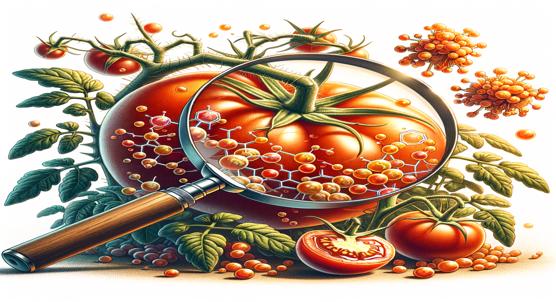
 13th July, 2024
| Jenn Hoskins
13th July, 2024
| Jenn Hoskins
Discovering Tomato Proteins Involved in Plant Chemical Production
University of Florida research reveals how key enzymes in tomato growth and stress adaptation are regulated. By identifying specific proteins that control enzyme degradation, this study could lead to tomatoes with enhanced nutritional benefits.
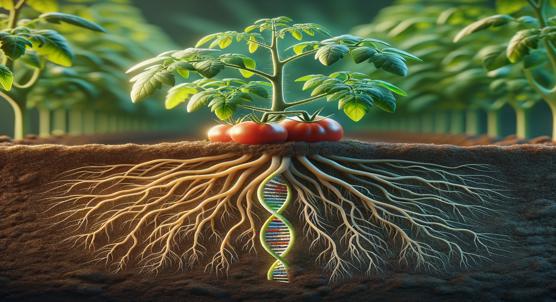
 13th July, 2024
| Jim Crocker
13th July, 2024
| Jim Crocker
Key Peptide from Tomato Gene Affects Root Growth and Gene Activity
Researchers at Dalian University of Technology discovered that miPEP396a, a peptide encoded by a tomato miRNA, regulates root growth and gene expression. This expands our understanding of miRNAs, showing they can both silence genes and produce functional peptides.
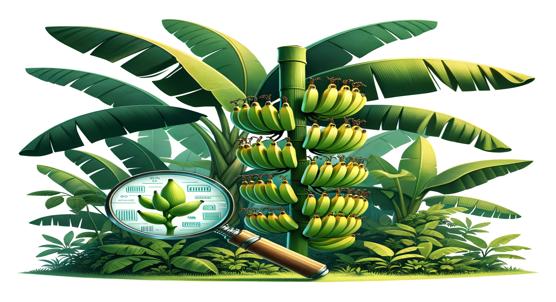
 13th July, 2024
| Jenn Hoskins
13th July, 2024
| Jenn Hoskins
Genomics Identifies Origins of Naturally Occurring Seedless Bananas
Researchers at National Taiwan University have discovered a method to produce seeds from sterile triploid bananas by hybridizing them with wild diploid species, resulting in tetraploid offspring. This breakthrough could boost genetic diversity and resilience in banana crops.
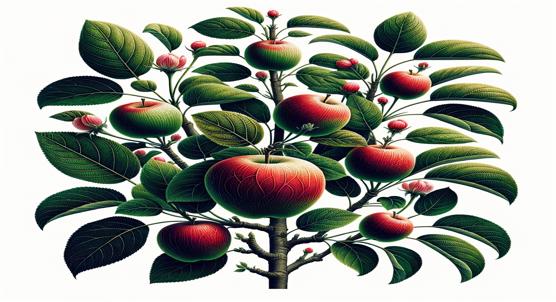
 13th July, 2024
| Greg Howard
13th July, 2024
| Greg Howard
How Sugar Attachment Affects Apple Plant Shape and Stress Resistance
Phlorizin, a key compound in apple plants, enhances growth, drought tolerance, and pest resistance. A study showed its crucial role in regulating stomatal development and defending against spider mites, highlighting its importance over other glycosylation products of phloretin.
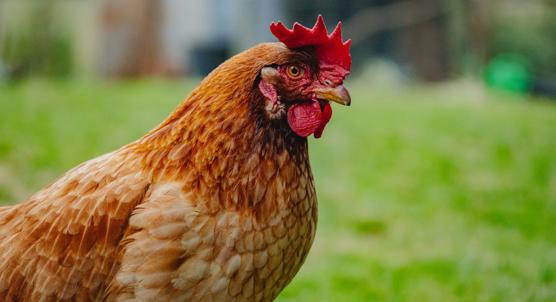
 13th July, 2024
| Jim Crocker
13th July, 2024
| Jim Crocker
Study of Dangerous Newcastle Disease Virus Strains Found in Deceased Chickens
Researchers at Sokoine University of Agriculture found significant genetic diversity in Newcastle disease virus strains in East Africa, complicating vaccine development and disease control. Continuous monitoring and region-specific vaccines are essential for effective management.

 12th July, 2024
| Jim Crocker
12th July, 2024
| Jim Crocker
Genetic Analysis of Local Sheep from the Southern Taklamakan Desert
Researchers at Tarim University analyzed the genomes of indigenous and foreign sheep breeds, revealing genes linked to desert adaptability, disease resistance, and wool traits. These findings offer crucial insights for breeding resilient livestock amidst climate change.

 12th July, 2024
| Jim Crocker
12th July, 2024
| Jim Crocker
High-Quality Genome Mapping and Analysis of a Harmful Plant Fungus
Researchers at UAE University have decoded the genome of the fungus causing black scorch disease in date palms. This breakthrough paves the way for targeted strategies to enhance plant resistance, promoting sustainable agriculture in the UAE.




